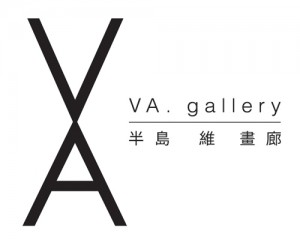Lui Chun-kwong
When he showed me around the gallery space three days before the opening of his latest exhibition, Lui Chun-kwong was visibly torn between elation and melancholy. The teacher in him – and quite a teacher he’s been, having taught at the Fine Arts Department at the Chinese University of Hong Kong for a quarter century – was understandably overjoyed to see some 70 former students of his come together and celebrate the 54-year-old master’s inadvertently devoted life in education. The artist in him, meanwhile, appeared crestfallen. “She has reduced my painting into thousands of pieces,” Lui smiled bitterly as we passed by Au Hoi-lam, who was setting up her meticulously crafted installation piece on one side of the room. “It looks like the girls are much more ready to cut my artworks to shreds,” he later remarked, looking wistfully at one of the few works that have mercifully kept his paintings intact.
In a sense, it’s all Lui’s fault. Upon retirement as one of the principal teachers at the university earlier this year, Lui was approached by the gallery to put on a teacher-student show. In response, he sent out invitations (a polite way of saying homework assignments) to a wide variety of his students, ranging from the finest of Hong Kong to Lui’s personal favourites, to each create a new work with an existing painting by Lui. “After taking my work, you can do whatever you want with it. You can burn it or dissect it,” he instructed; his students duly obliged.
“It’s both exciting and sad,” Lui now reflects on his contradictory emotions. “They’re still my paintings after all!” Too late. “Some of my students have really made them completely unrecognisable; it’s hard to avoid this mixed feeling. I’ve always had the view that my works, once they’re finished, mean very little to me. The fun of it is in the expression, the creative process. My melancholy is [more] stemmed from the realisation that a painting of mine has… vanished. Will a better work emerge from this process? It can never be guaranteed.”
You could say the same about Lui’s serendipitous start to his teaching career at CUHK, which, over time, has given us many of the best local artists working today. In 1985, the Guangdong-born, Hong Kong-based artist was all set to begin his professional career in New York, but as Lui came back to Hong Kong to deal with some emigration procedures he was approached to head a new vacancy at the faculty. “I was 29 then,” he recalls, “and I thought Dad and Mum would be very happy if I took up the job. Since I got no money, it wouldn’t be a bad idea to teach for two or three years there. I was expecting two or three, and ended up giving it 25. That’s so-called life.”
In that time, Lui has taken a lucid view of the art scene’s changing landscape: from the specialisation in one particular medium in the old days to the mixed-media approach today; from a time of contemplating big ideas to the post-1997 emphasis on local culture and the completely frivolous subject matters that have grown to occupy our current crop of young artists. Through it all, Lui himself has also undergone a change in mentality. “In my first decade or so [at the job], I tried very hard to be a good teacher. I wasn’t able to,” he says. “In the second half [of my teaching career], I gave up being a teacher. I turned myself into my students’ audience – only that I was more sincere and honest than the ordinary ones. I’d follow their work. Whether they’re working on something or encountering difficulties, I went to great length to track their progress, with the mentality of an audience.” As he observes, many of those who’ve gone on to make a name for themselves are the really, really persistent ones. “Art doesn’t give up on you,” the teacher reflects. “Only you can give up on art.”
With the new group exhibition, Lui is also looking to bring the curtain down on an artistic phase – characterised by his signature abstract paintings of scrupulously drawn, arbitrarily coloured vertical lines on large canvases – that he started in late 1993. “Most of my CUHK students in the past two decades have been looking at the same style of mine,” he says. “They’re thinking, ‘Mr Lui never changes.’ They wished very much to see something new from me, but due to the job, I haven’t really had the time to think about my work. I hope to have more freedom to do my work from now on, to concentrate on my own artistic career.”
Three days later, we meet again at the totally packed opening at Osage Kwun Tong. “This is like a big reunion,” says an ecstatic Lui, surveying the crowd like a proud father of hundreds. As the master moves on to his next artistic phase with a bang, the paintings cut open are still in shreds, and generations of Hong Kong artists are once again united by art and booze. Here’s to a new beginning.

